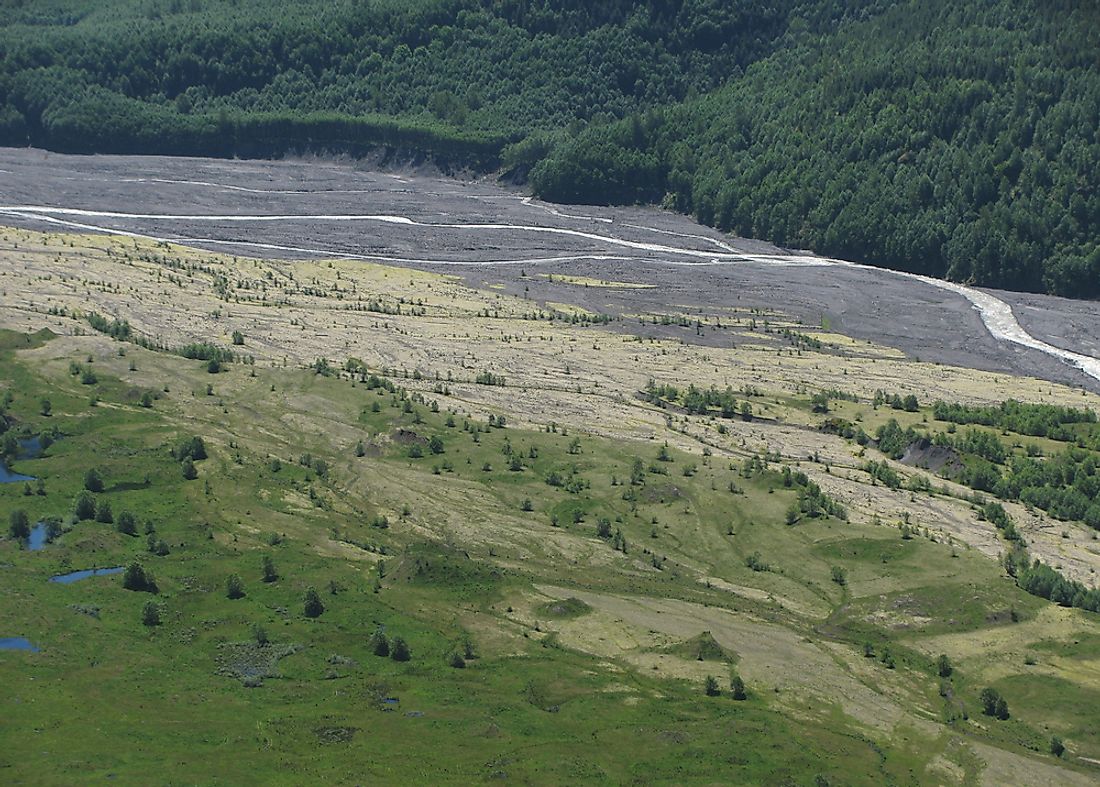Fluvial Landforms: What Is A Braided Channel?

Fluvial Landforms: What Is A Braided Channel?
A braided channel, also known as a braided river, refers to a network of small channels that are separated by minute and temporary islands known as braid bars, creating a unique appearance.
Formation
In order to form, a braided channel requires a heavy sentiment load and a steep gradient. A rapid and frequent variation in discharging water is also required. A river with banks that are resistant to erosion could form meandering deep and narrow channels, while a river with banks that are erodible will form shallow, wide channels sustaining helical flows that result in the formation of braided channels.
Examples of Braided Channels
Braided channels are found throughout the world from New Zealand to Alaska. The Brahmaputra-Jamuna River in Bangalesh is a popular example of a braided river. Another classic example of a braided channel is the Platte River in Nebreska in the US, as well as the Toutle River in Washington. Part of the Yellow River in China also forms a braided channel.







